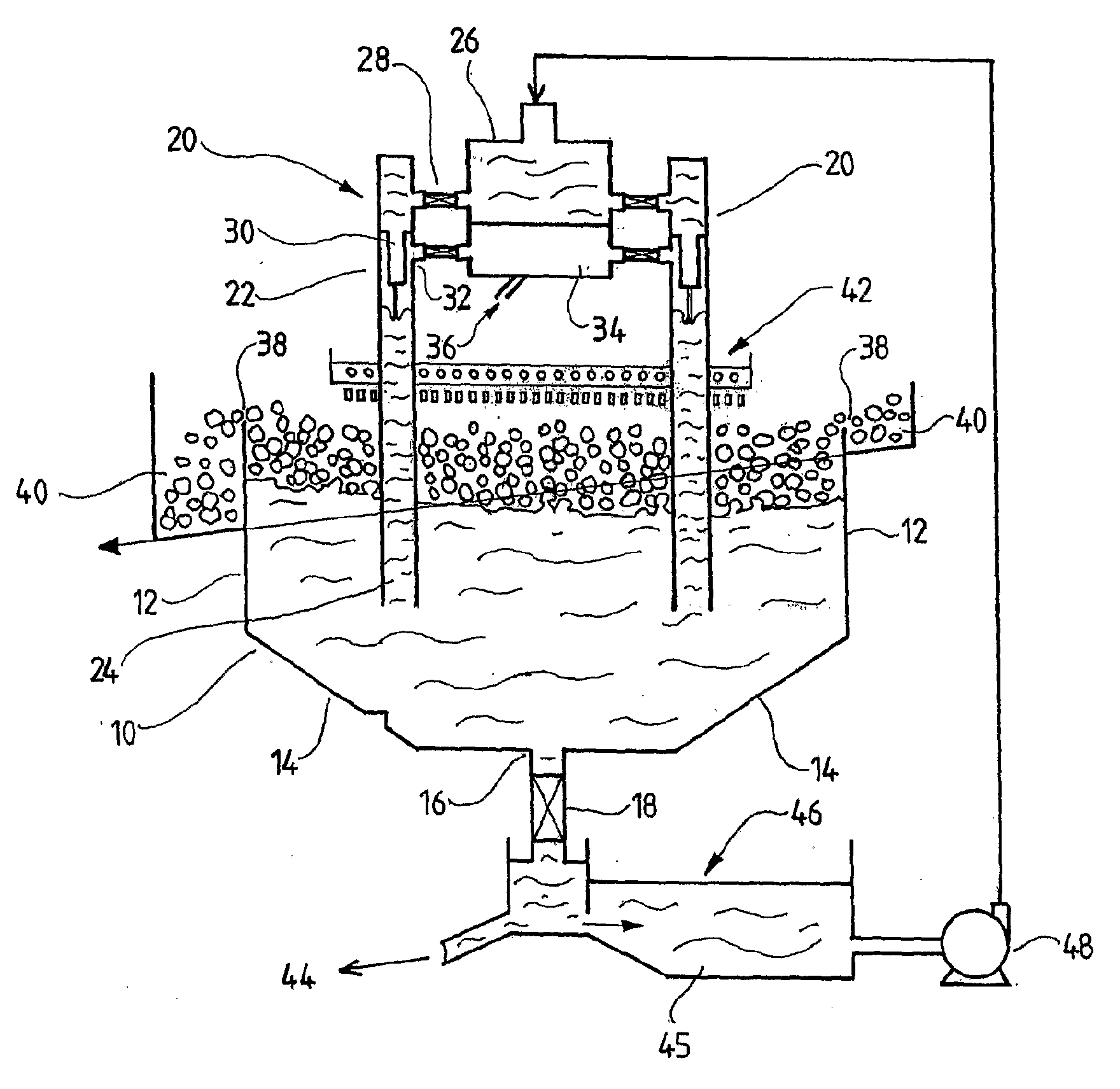Flotation Method
a technology of flotation and impeller speed, which is applied in the direction of flotation, solid separation, chemistry apparatus and processes, etc., can solve the problems of further air entrainment, inability to adjust the impeller speed in order to affect one of its functions,
- Summary
- Abstract
- Description
- Claims
- Application Information
AI Technical Summary
Benefits of technology
Problems solved by technology
Method used
Image
Examples
examples
[0064]The present invention was tested on coal through a pilot plant Jameson Cell located in the Bowen Basin of Queensland. The Jameson Cell had an industrial sized downcomer, 280 mm in diameter, situated in a cell 1.6 m in diameter. A bleed off stream from the processing plant fed the Jameson Cell. The pilot cell had a variable speed pump, as well as several different sized slurry lenses, which permitted different jet velocities in the downcomer to be tested. A valve and flowmeter was connected to the air inlet, that permitted varying the air to pulp ratio. The air to pulp ratio, or APR, is the measure of the volumetric flowrate of air that is mixed with the volumetric flowrate of slurry. Hence an APR of 1 implies there is an equal volume of air mixed with an equal volume of slurry. Industrial sized Jameson Cells have an APR ranging from 0.7 to 1.5, although this testwork confirmed that an APR of 1.7 can be successfully used in a Jameson Cell.
[0065]In the testwork, it was highlight...
PUM
 Login to View More
Login to View More Abstract
Description
Claims
Application Information
 Login to View More
Login to View More - R&D
- Intellectual Property
- Life Sciences
- Materials
- Tech Scout
- Unparalleled Data Quality
- Higher Quality Content
- 60% Fewer Hallucinations
Browse by: Latest US Patents, China's latest patents, Technical Efficacy Thesaurus, Application Domain, Technology Topic, Popular Technical Reports.
© 2025 PatSnap. All rights reserved.Legal|Privacy policy|Modern Slavery Act Transparency Statement|Sitemap|About US| Contact US: help@patsnap.com



